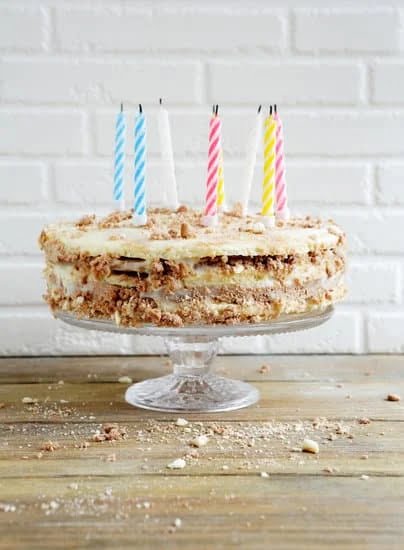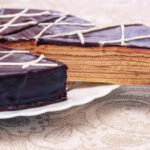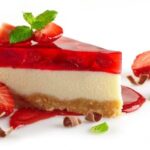Welcome to the exciting world of robot cake decorating ideas. Whether you’re a professional baker, a hobbyist, or just someone looking to add a touch of futuristic charm to your next celebration, robot-themed cakes are an excellent choice. In this article, we will dive into the vast array of creativity that comes with robot cake decorating and explore various ideas for designs, flavors, and presentation.
Robots have long fascinated us with their sleek and metallic appearances, and now we can bring that same fascination to our cakes. From cute and adorable robots for children’s birthdays to elegant and sophisticated designs for weddings and other special occasions, there is no shortage of inspiration when it comes to robot cake decorating.
In the following sections, we will uncover the top five robot-inspired cake designs that are sure to unleash your creativity. We will also discuss the importance of choosing the right robot cake toppers for that perfect finishing touch. Additionally, we’ll discover delicious robot-themed cake flavors and recipes that are sure to impress your guests.
So get ready to mix up the batter, gather your essential equipment, and embark on a journey from beginner to pro as we provide you with a step-by-step guide for creating stunning robot cakes. Whether you’re hosting a child’s birthday party or planning an upscale event, we’ll also share innovative techniques and emerging trends in robot cake decorating so you can stay ahead of the curve.
Get ready to spark imagination and make lasting memories with these extraordinary robot cake decorating ideas. Let’s dive in.
Unleashing the creativity
Robots have become a popular theme for cake designs, offering a fun and modern twist to traditional cake decorating. With their metallic sheen, sleek lines, and futuristic appeal, robot-inspired cakes can be a show-stopper at any event. In this section, we will explore the top 5 robot-inspired cake designs that are sure to unleash your creativity and impress your guests.
- Retro Robot: This design is inspired by classic toy robots from the 1950s and 1960s. The cake can be shaped like a robot’s body with rectangular or cylindrical tiers, and decorated with retro colors like silver, red, and blue. Edible fondant gears and buttons can be added for extra detail, along with cute edible antenna made from wire or fondant.
- Steampunk Robot: Steampunk combines elements of science fiction and Victorian-era fashion. To create a steampunk robot cake, start with a square or round cake covered in metallic fondant. Add details like gears, cogs, and striped patterns to give it a vintage mechanical look. Use metallic food coloring to paint bolts and other metal accents on the cake for an authentic steampunk feel.
- Transformer Robot: Inspired by the popular Transformers franchise, this design features a cake that can transform into different shapes. You can create layers that slide out or lift up to reveal hidden compartments or additional decorations inside the cake. Use colorful fondant to make car parts or iconic transformer symbols to bring the magic of these shape-shifting robots to life.
- Space Robot: This design takes inspiration from futuristic sci-fi movies set in outer space. Shape your cake into a rocket ship or satellite form using dome-shaped pans or stacking circular cakes on top of each other. Cover the cake in black fondant for space-like effect and add silver stars or planets made from edible glitter or candy for an eye-catching touch.
- Robotic Animals: Combine the cuteness of animals with the sleekness of robots by creating a cake that resembles a robotic version of a beloved creature. From robot pandas to dinosaur robots, the possibilities are endless. Use shaped cake pans or sculpt the cake into the desired animal shape, and then cover it in metallic fondant or gray buttercream to give it a robotic appearance.
| Cake Design | Description |
|---|---|
| Retro Robot | A design inspired by classic toy robots from the 1950s and 1960s, featuring retro colors and edible fondant gears. |
| Steampunk Robot | A design incorporating elements of science fiction and Victorian-era fashion, with metallic fondant and painted bolts for a vintage mechanical look. |
| Transformer Robot | A design inspired by Transformers, with layers that transform to reveal hidden compartments or decorations inside the cake. |
The importance of choosing the right robot cake toppers
The choice of cake toppers can make or break the overall design and aesthetic of a robot-themed cake. Robot cake toppers serve as the finishing touch that adds an extra element of creativity and excitement to the dessert. In this section, we will explore the importance of choosing the right robot cake toppers and provide some tips for achieving a perfect finishing touch.
Firstly, when selecting robot cake toppers, it is crucial to consider the theme and style of the cake. Whether you are going for a futuristic look or a cute and whimsical design, there are robot cake toppers available in various styles, colors, and sizes.
Consider the overall color scheme of your cake and choose robot figurines or decorations that complement it. For example, if your cake features vibrant primary colors, opt for robot toppers in bright shades like red, yellow, or blue.
In addition to aesthetics, it is also important to think about the functionality of the robot cake toppers. Are they lightweight enough so that they don’t weigh down the delicate sponge or icing? Will they stay securely in place on top of the cake without falling over? Ensuring that your chosen cake toppers are not only visually appealing but also practical is essential for a successful decorating experience.
Lastly, don’t be afraid to get creative with your choices. Explore different types of robot-inspired decorations such as edible fondant robots, metallic sprinkles shaped like gears or screws, or even mini LED lights that can add a magical glow effect. The possibilities are endless when it comes to choosing the right robot cake topper.
To summarize, selecting the right robot cake toppers is crucial for achieving a perfect finishing touch on your baking masterpiece. Consider both aesthetic appeal and functionality when choosing these decorations, ensuring they match the theme and style of your cake while staying securely in place. By carefully selecting and thoughtfully incorporating your chosen robot-inspired decorations into your design, you can elevate your robot cake to new heights of creativity and delight.
Mixing up the batter
When it comes to robot cake decorating, the design is just one part of creating an unforgettable dessert. The flavor and taste of the cake play a crucial role in making it a crowd-pleaser. By incorporating robot-themed flavors and experimenting with different recipes, you can take your cake to the next level.
Futuristic Flavors
To truly embrace the theme of your robot cake, consider using unique flavors that evoke a futuristic vibe. Some popular choices include:
- Metallic Madness: Infuse your batter with edible silver or gold dust for a shiny and metallic taste.
- Electric Lemon: Add a tangy twist to your cake by incorporating lemon zest or lemon extract for a zesty burst of flavor.
- Robot Raspberry: Use fresh raspberries or raspberry jam to create a sweet and fruity sensation.
DIY Robot-themed Recipes
If you’re feeling adventurous, why not try creating your own robot-themed concoctions? Here are some ideas to get you started:
- Techno Truffles: These bite-sized treats can be made by combining crushed biscuits, cocoa powder, melted chocolate, and cream cheese. Shape them into small spheres and decorate with edible metallic paint or silver sprinkles.
- Robo-Cake Pops: Take inspiration from cake pops and mold them into mini robots using a combination of crumbled cake mixed with frosting. Coat each pop with colorful candy melts and use various candies to create fun facial features.
- Circuit Board Cake: This recipe involves baking one large rectangular cake as the base layer imitating a circuit board design using colorful icings or fondant cutouts. Stack additional smaller layers on top for added height and decoration.
Customizing Classic Recipes
With many tried-and-tested recipes out there, don’t shy away from modifying classic flavors by adding a robotic twist:
- Vanilla Voyager: Enhance the classic vanilla flavor by incorporating crushed metallic candies, such as silver or gold dragées, into the batter.
- Chocolate Circuit: Add chocolate chips to your cake batter for a texture that mimics the intricate design of a circuit board.
- Robo-Red Velvet: Infuse traditional red velvet cake with edible glitter or silver food coloring to give it a futuristic appearance.
Remember, the flavors and recipes you choose can be as unique as your imagination. Whether you opt for futuristic flavors, create your own robot-themed treats, or add a robotic twist to classic recipes, finding the perfect combination of taste and design will make your robot cake a true standout.
Tools of the trade
When it comes to creating a stunning robot-themed cake, having the right tools is essential. The proper equipment can make all the difference in achieving your desired design and ensuring a successful cake decorating experience. Here are some essential tools every aspiring robot cake decorator should have:
- Cake Turntable: A cake turntable is a must-have tool for any cake decorator. It allows you to easily rotate the cake while frosting and decorating, ensuring even coverage and smooth edges.
- Offset Spatulas: Offset spatulas come in various sizes and are used for spreading frosting, smoothing edges, and creating detailed designs on the cake’s surface.
- Piping Bags and Tips: Piping bags and tips are indispensable for creating intricate designs like gears, circuits, or robotic features on your cake. Experiment with different tip shapes and sizes to achieve various textures and patterns.
- Fondant Tools: Fondant is often used to create three-dimensional robot decorations or cover an entire cake for a sleek finish. Invest in essential fondant tools such as rolling pins, cutting wheels or knives, shape cutters, embossing mats, and modeling tools.
- Edible Color Gels or Paints: Coloring your frosting or fondant is essential in bringing your robot-themed cake design to life. Edible color gels or paints allow for precise coloring and shading when creating intricate details.
Having these essential tools at hand will not only make your robot cake decorating journey easier but also enable you to unleash your creativity fully. With practice and experience, you’ll be amazed by the incredible robot-themed cakes you can create.
| Tool | Description |
|---|---|
| Cake Turntable | Allows you to rotate the cake while frosting and decorating |
| Offset Spatulas | Used for spreading frosting, smoothing edges, and creating designs |
| Piping Bags and Tips | Used for creating intricate designs and patterns on the cake |
| Fondant Tools | Essential tools for working with fondant, such as rolling pins and cutting wheels |
| Edible Color Gels or Paints | Used for coloring frosting or fondant to bring the design to life |
From beginner to pro
Creating a stunning robot cake may seem like a daunting task, especially for beginners. However, with the right guidance and techniques, anyone can create a masterpiece that will leave guests in awe. Here is a step-by-step guide to help you bring your robot cake to life.
Gather Your Materials
Before you begin decorating your robot cake, make sure you have all the necessary materials. This includes cake pans in various sizes, buttercream frosting, fondant or modeling chocolate for sculpting the robot figures, piping bags and tips for different designs, food coloring gels in various colors, and edible decorations such as sprinkles or silver beads.
Bake and Assemble the Cake
Start by baking your cakes according to your desired flavors. Once they are cooled down, level them using a serrated knife to remove any uneven tops. Stack and fill each layer with frosting or filling of your choice. It’s best to use a crumb coat for the first layer of frosting to seal in any loose crumbs. Let it chill in the refrigerator for about 15 minutes before applying the final layer of buttercream on top.
Create Robot Figures
To create your robot figures, use either fondant or modeling chocolate depending on your preference. Start by sculpting the body shape by rolling out the fondant or modeling chocolate into balls and cylinders. Attach these pieces together using edible glue or water depending on what medium you are working with. Add details such as eyes, arms, legs, antennas using small pieces of colored fondant or modeling chocolate.
Decorate with Piping Techniques
Piping techniques can add intricate details and textures to your cake design. You can use different piping tips to create gears, bolts or circuit board patterns on the sides of the cake. For example, you could use a round tip to pipe dots that resemble screws or a star tip for creating gears. Use different shades of metallic food coloring gels to achieve that robotic look.
Finishing Touches
To give your robot cake the final touch, add any additional decorations such as edible silver beads for buttons or wires, sprinkles for added texture, or even small LED lights to make your robot figurines light up. Remember, the finishing touches are what will truly bring your robot cake to life and make it stand out.
By following these step-by-step instructions and incorporating your own creativity, you can create a stunning robot cake that will impress everyone at the party. Remember to have fun throughout the process and don’t be afraid to experiment with different designs and techniques. With practice, you’ll become a pro at crafting exceptional robot cakes that will leave a lasting impression on all who see them.
Turning heads at the party
One of the most exciting aspects of creating a robot-themed cake is the opportunity to wow your guests with a stunning presentation and display. Transforming a simple cake into a showstopper can make all the difference in creating a memorable experience for everyone at the party. Here are some creative ideas for turning heads at your next celebration:
3D Robot Topper
Add an extra dimension to your robot cake by incorporating a 3D robot topper as the centerpiece. This can be created using fondant, modeling chocolate, or even plastic figurines. Choose a robot design that matches the theme of your cake and place it on top for an eye-catching effect.
Edible Metallic Elements
Give your robot cake a futuristic and metallic look by adding edible silver or gold accents. You can achieve this by using luster dust or edible paint to create shiny detailing on different parts of the cake. Consider highlighting gears, bolts, or circuit-like patterns to enhance the robot theme.
Interactive Elements
Make your robot-themed cake interactive by incorporating moving parts or lights. Consider using LED lights in different colors to mimic futuristic robot features such as glowing eyes or buttons that light up when pressed. Add small wheels that spin or gears that move to bring your robot creation to life.
Cake Board Designs
Elevate your cake presentation by decorating the base or board where your cake sits. Use colored fondant or edible decorations to create a futuristic cityscape, space scene, or mechanical background that complements the overall robot theme.
Creative Cake Stands
Instead of using traditional cake stands, consider alternative options that align with the robot theme and elevate their visual appeal. Look for stands shaped like cogs, gears, or even miniature robots themselves. These unique stands will enhance the overall presentation and make your cake a real centerpiece.
By applying these presentation and display ideas to your robot-themed cake, you’ll undoubtedly impress your guests and create a visually striking dessert that will be the talk of the party. Remember to let your imagination run wild and customize these suggestions to fit your specific design and style preferences. With some creativity and attention to detail, you can make your robot cake a showstopper at any celebration.
Extraordinary robot cake ideas for special occasions
When it comes to special occasions, such as weddings, birthdays, and other significant events, having a unique and memorable cake is essential. Robot cake ideas can bring a touch of excitement and creativity to these celebrations. Whether it’s a futuristic wedding or a birthday party with a science-fiction theme, robot-inspired cakes are sure to be the highlight of the event.
Weddings
Robot-themed wedding cakes are perfect for couples who want to add a quirky and modern twist to their special day. One idea is to have tiered cakes with each layer representing different robots or robot parts.
For example, the bottom tier could be decorated with gears and circuits, while the top tiers could showcase cute robot figurines dressed as bride and groom. Another option is using metallic colors like silver or gold fondant icing for an elegant yet robotic look.
Birthdays
For birthdays, robot cakes can be customized based on the person’s interests and preferences. You could go for a classic design with a round shape covered in colorful fondant icing and embellished with edible decorations shaped like buttons, bolts, or antennas. Alternatively, you can recreate popular robots from movies or video games such as R2-D2 from Star Wars or Wall-E from Pixar’s animated film.
Other Special Occasions
Robot cake ideas can also be used for various other occasions like baby showers, anniversaries, or even corporate events. For baby showers, consider designing a robot-themed gender reveal cake where cutting it open reveals either pink or blue-colored filling inside indicating the baby’s gender. To make corporate events more engaging and fun, you can display robot-shaped cupcakes with company logos or create miniature edible replicas of robots related to the industry.
Overall, incorporating extraordinary robot cake ideas into special occasions adds an element of surprise and fun that guests will remember long after the event is over. The possibilities are endless, and customization is key to creating a cake that perfectly complements the theme and atmosphere of the celebration.
The future of robot cake decorating
In recent years, robot cake decorating has become a popular trend in the baking world. With advancements in technology and a growing interest in all things robotics, it is no surprise that this theme has made its way into the realm of cake design. As we look to the future, there are innovative techniques and emerging trends that are shaping the way we approach robot cake decorating.
One of the most exciting developments in robot cake decorating is the use of 3D printing technology. This allows bakers to create intricate and detailed robot-inspired decorations that were once only possible through skilled handwork. With a 3D printer, it is now possible to bring any robot design to life on top of a cake, making for a truly unique and eye-catching centerpiece.
Another emerging trend in robot cake decorating is the incorporation of edible electronics. Bakers are finding creative ways to incorporate LED lights, sound devices, and even moving parts into their robot-themed creations. These interactive elements not only add visual appeal but also provide a memorable experience for those lucky enough to enjoy these cakes.
In addition to new techniques, there are also emerging trends when it comes to the aesthetic aspect of robot cake decorating. While traditionally robots were depicted as metallic and futuristic, there is now a move towards more playful and whimsical designs. Some bakers are opting for colorful and cartoon-like robots while others are embracing a steampunk-inspired look with gears and cogs.
As technology continues to evolve and creativity knows no bounds, there is no doubt that the future of robot cake decorating holds endless possibilities. From advancements in 3D printing to incorporating edible electronics, these innovative techniques will continue to shape how we celebrate with cakes.
So whether you’re planning a robot-themed birthday party or looking for an out-of-this-world wedding cake design, keep an eye out for these emerging trends that will take your robot cakes to new heights of creativity.
Conclusion
In conclusion, robot cake decorating ideas offer a unique and creative way to celebrate special occasions. From birthdays to weddings and everything in between, these innovative cake designs can truly make a lasting impression on guests. By exploring the world of robot cake decorating, individuals can unleash their creativity and create memorable celebrations.
Choosing the right robot cake toppers is essential for achieving a perfect finishing touch. Whether it’s adorable robot figurines or intricate edible decorations, these toppers can bring the entire design together. The article has provided tips on selecting the right toppers that will complement the overall theme and enhance the visual appeal of the cake.
Additionally, incorporating delicious robot-themed flavors and recipes into the cake batter can elevate the entire experience. Mixing up flavors like lemon-lime or incorporating interesting ingredients like metallic-colored sprinkles can truly make these cakes stand out. The article has already shared some mouthwatering recipe ideas for those seeking inspiration.
Furthermore, having the right equipment is crucial for successful robot cake decorating. From piping bags to offset spatulas, there are several tools that are indispensable when it comes to creating stunning designs. Ensuring that you have these essential equipment items on hand will make the process smoother and more enjoyable.
Overall, by following step-by-step guides and implementing presentation ideas mentioned in this article, anyone can go from a beginner to a pro in creating beautiful robot cakes. These striking creations are sure to turn heads at any party and provide an exciting centerpiece for any celebration.
Looking ahead, as technology continues to advance, there are bound to be even more innovative techniques and emerging trends in robot cake decorating. Perhaps we will see robots themselves assisting in the decoration process or new materials being developed specifically for edible robotics. The future of this art form holds endless possibilities, further inspiring creativity and pushing boundaries in celebrating special occasions with delicious and visually stunning robot cakes.
So whether you’re planning a child’s birthday party or a futuristic-themed wedding, consider exploring the world of robot cake decorating ideas. Inspire creativity, dazzle your guests, and create memorable celebrations with these unique and extraordinary cakes.
Frequently Asked Questions
How do you write your name on a cake without cream?
Writing your name on a cake without cream requires some creativity and alternative options. One method is to use edible food pens or gel writers, which are specifically designed for decorating cakes and can be easily used to write names or create designs directly onto the cake surface. These pens come in various colors, allowing you to choose one that complements the cake’s appearance.
Another option is to use melted chocolate or icing as a substitute for whipped cream. By heating and melting these ingredients, you can pour them into a piping bag with a fine tip and carefully write your name onto the cake’s surface. Both of these techniques offer straightforward ways to personalize a cake without relying on whipped cream.
How to decorate cake without whipped cream?
Decorating a cake without whipped cream opens up a world of alternative possibilities that can still result in an aesthetically pleasing and delicious creation. One popular option is using buttercream frosting, which is versatile, easy to work with, and provides an excellent substitute for whipped cream. You can apply it smoothly onto the cake’s sides or pipe decorative designs using various piping tips.
Another choice is fondant, which offers a smooth finish and allows for intricate detailing and sculpting on the cake’s surface. Fondant comes in various colors that can be rolled out and draped over the entire cake or used selectively for decorations like flowers or patterns. Additionally, fresh fruits, such as berries or sliced fruit, can be arranged creatively atop the cake to add color, flavor, and visual interest without relying on whipped cream.
How can I write my name on a cake at home?
Writing your name on a cake at home involves several simple methods that require minimal tools or ingredients. If you have buttercream frosting, you can place it in a piping bag fitted with a small round tip to write your name directly onto the cake’s surface with ease by gently squeezing the bag. Alternatively, if you have melted chocolate or icing available, let it cool slightly before transferring it into a small plastic sandwich baggie. Snip off a tiny corner of the baggie and use it to pipe out your name using gentle pressure.
Another option is to purchase or make stencils of letters, which can be placed on top of the cake, and sprinkling powdered sugar or cocoa powder over them. Once removed, your name will appear in a contrasting color against the cake’s background. Regardless of the method chosen, personalizing a cake with your name at home is achievable with just a bit of creativity and the right tools.

Welcome to our cake decorating blog! My name is Destiny Flores, and I am the proud owner of a cake decorating business named Cake Karma. Our mission is to provide delicious, beautiful cakes for all occasions. We specialize in creating custom cakes that are tailored specifically to each customer’s individual needs and tastes.





